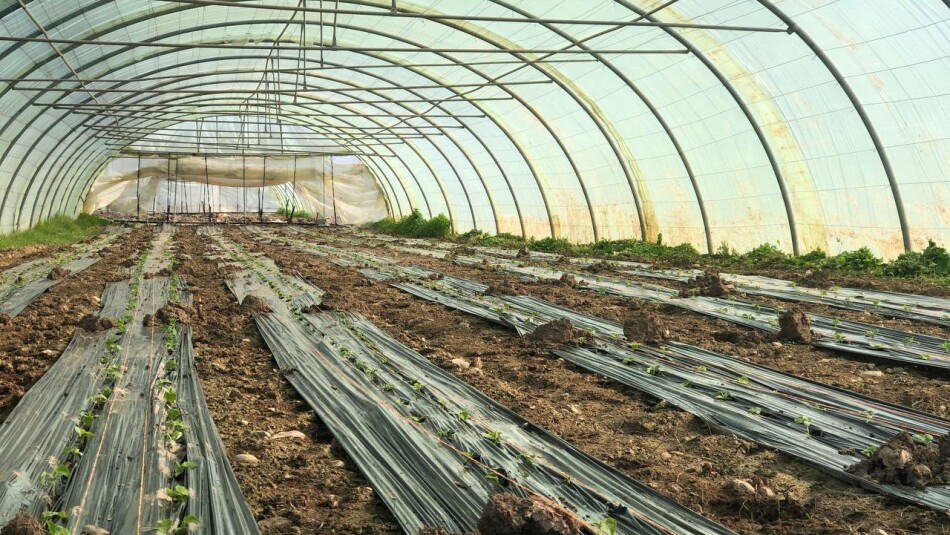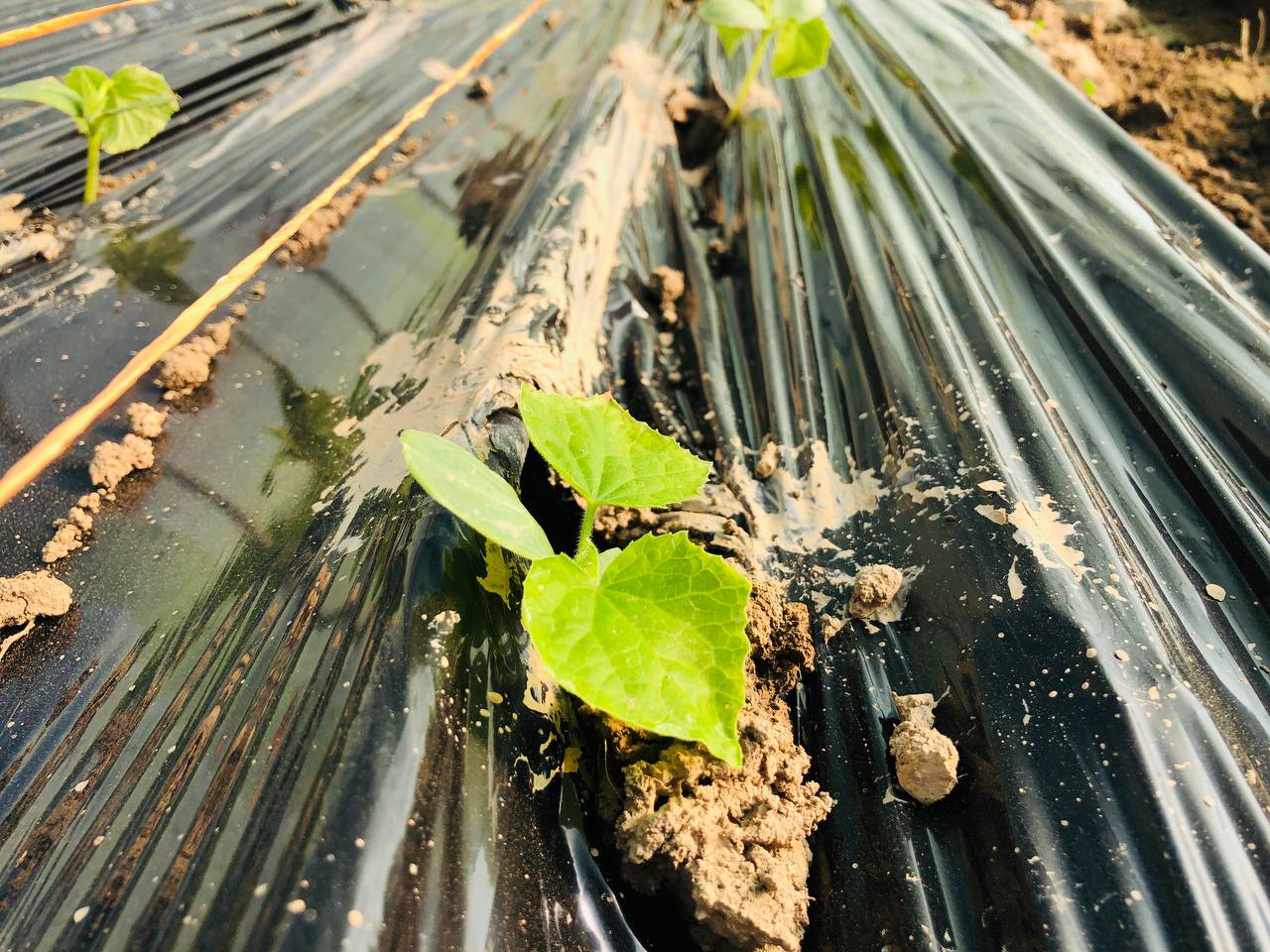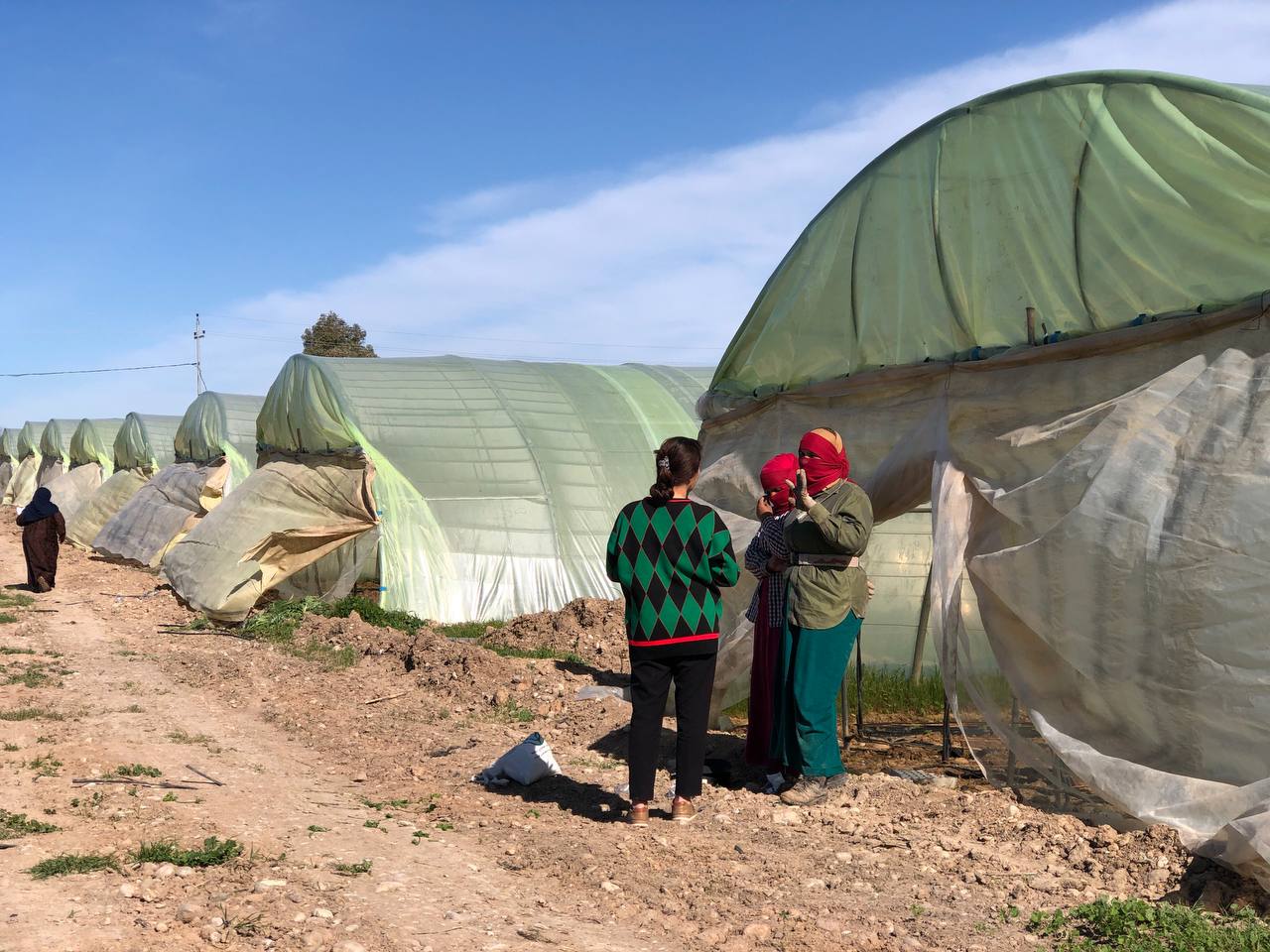
“I throw greenhouse waste, hoses, and nylon into my agricultural land or burn them on it,” Omar Abdullah, a farmer in the Garmian region, says that he did not receive any instructions and is not aware of the damage they may cause to the soil.
“I think this is the best way to get rid of greenhouse waste,” Abdullah said.
Hundreds of farmers in the Garmian region dispose of greenhouse waste, such as hoses and nylon used to cover greenhouses, in an unscientific way. Most of them collect them at a corner of the agricultural land so that they mix with the soil over time, and some burn them, forgetting the danger that this poses to the soil and the environment.
Plastic houses cover an area estimated at thousands of dunums (10 donum= 1 hectare) of agricultural land in Garmian. The region’s farmers began following this method several years ago in order to reduce costs and increase production, but after the completion of harvesting agricultural crops, plastic house waste becomes a source of soil and environmental pollution as a result of burning or throwing it away.
Most of the time, we burn it on agricultural land or bury it in a corner until it decomposes
Abdullah, who owns 10 greenhouses in the Sarqala sub-district of Kifri district, says that he buys hundreds of meters of nylon and hoses annually, and after the end of the agricultural season they become unusable.
“Nylon is used once, but greenhouses must be renewed every two or three years. Most of the time, we burn it on agricultural land or bury it in a corner until it decomposes in the soil,” according to Abdullah, in addition to thousands of meters of water hoses that also turn into soil pollutants.
"In our area, only one or two farmers collect greenhouse waste and sell it. The rest say that what they earn from selling it is not equivalent to the effort expended to collect it."

Regarding whether he had information about the harm caused to the soil and the environment as a result of throwing plastic waste, Omar said, “I do not know and have not heard of the harm caused by plastic to soil, plants, and humans. This is the first time I have heard of that.”
In general, Garmian farmers lack awareness regarding the damage caused by greenhouse waste to their agricultural lands, while climate change experts indicate that its damage will appear in the future, as these materials remain for periods ranging between 10 and 200 years before they decompose and turn into particles that mix with the human food chain and the air that humans breathe.
Kifri, home to over 50,000 people, is one of the districts located within the disputed territories, part of Diyala province run by the Iraqi government, while administratively is one of the districts of the Garmian local administration.
Garmian administration which includes several districts and sub-districts between Sulaymaniyah and Diyala province is part of Sulaymaniyah Northern Province, one of the provinces of the Kurdistan Region of Iraq KRI under the Kurdistan Regional Government KRG.
Abdul Rahman Abdul Karim, another farmer in Garmian, allocated 25 dunams this year to growing watermelon inside greenhouses. He used about 1.5 ton of nylon in addition to 16,000 meters of hoses to prepare 10 greenhouses.
“Sometimes people take nylon and hoses that are no longer usable, and other times I collect them in a specific place on my agricultural land,” he continued, saying, “I know that plastic is harmful to the soil and plants. The earth is like our mother, whom we must serve.”
The Garmian region consists of three districts (Kalar, Kifri, and Darbandikhan), and it is administratively affiliated with the Sulaymaniyah Governorate. It is characterized by fertile lands suitable for agriculture and is adjacent to the Diyala and Salah al-Din governorates.
Khaled Suleiman, a journalist in the field of environment and climate change, spoke to (KirkukNow) about the great damage resulting from the mixing of nylon with the soil, including groundwater pollution.
“When rainwater penetrates into the soil, the decomposed plastic waste drifts with it into the ground. The plastic after it turns into particles microscopic particles that can spread in water, and when a person drinks this water, these plastic particles enter his body” he said.
Fine plastic particles are absorbed by plants and accumulate in their fruits and leaves
“When these particles mix with surface and groundwater that humans use for agriculture, the fine plastic particles are absorbed by plants and accumulate in their fruits and leaves,” he added.
“The soil is rich in bacteria, germs, and microorganisms, which play a role in fertilizing the soil, but nylon and plastic waste that decomposes in the soil eliminate these bacteria and microorganisms, leading to a decline in the fertility and sterility of the land.”
He pointed out that "if these plastic wastes are not mixed with the soil, they will decompose due to heat into plastic particles and spread into the air that people inhale."
Regarding farmers who burn greenhouse waste, Suleiman told KirkukNow, “This method is also harmful and not an option, because a large portion of it turns into dangerous emissions that pollute the air and the rest is mixed with the soil.”
Despite the challenges posed by climate change and government routine, farming remains a vital sector of Iraq’s economy, providing livelihoods for millions of Iraqis and ensuring part of the country's food security.
About one-eighth of Iraq’s total area is arable, and another one-tenth is permanent pasture. A large proportion of the arable land is in the north and northeast, where rain-fed irrigation dominates and is sufficient to cultivate winter crops, mainly wheat and barley.

A farm with tens of greenhouses in the Garmian area, Sulaymaniyah, March 2024. KirkukNow
“It is best not to use nylon and plastic in agriculture, and if they are used, effective methods must be followed to get rid of plastic waste... Farmers can collect nylon in a specific place and then transport it to special centers for recycling it,” Sulaiman said.
He believes that the Directorates of Agriculture, Environment, and Health are responsible for opening a special center to collect plastic waste and prevent its spread in the soil, and it must require this of farmers.
KirkukNow could not obtain official statistics on the area of land cultivated using greenhouses, but only in the Sarqala subdistrict of Kifri alone, an area of 600 dunams was planted using 302 greenhouses.
Aram Saber, head of the Agriculture Division in Sarqala, told KirkukNow, “The drought that the region witnessed over the past years was the reason behind farmers relying on greenhouses, because they consume less water, but at the same time they have disastrous effects on the environment.”
“We circulate instructions to farmers annually and inform them of the harmful effects of plastic waste by holding awareness sessions or field visits.”
Resorting to farming using greenhouses and nylon is less expensive, crops are produced faster and less susceptible to agricultural pests, and above all, crops can be produced in greenhouses all year round.
Zana Abu Bakir, a professor at Saladin University, told (KirkukNow), “But we must know that the crops produced in greenhouses are not organic in terms of taste, color, and amount of vitamins like other crops that grow under the sun.”
“Plastic materials are made from petroleum derivatives, they will not decompose in the soil, leading to pollution and a decline in fertility, or their production directly affecting human health.”